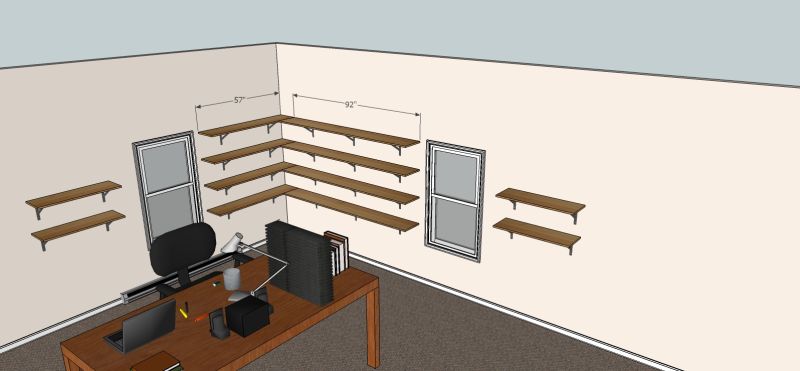Question
Does anyone have an edgebander that has a rubber covered contact roll as the initial pressure rolls? I have a SCMI basic two that I am going to partially rebuild. The three pressure rolls will be machinist turned, but I thought it may be better to think about using a rubber covered roll. I have noticed problems with partial adhesion, top or bottom of panel only adhering. I have watched the squareness of the panel edge, but still sometimes have this problem.
Forum Responses
(Cabinetmaking Forum)
From contributor J:
I have a Cehisa EP20 that originally came with 4 solid steel contact rolls, but shortly after delivery, they offered to exchange the second roll for one that has a thin layer of urethane (1/4" thick) covering the outside. This has eliminated any edge bonding failure due to non-square cuts off the panel saw. The urethane is flexible enough to follow minor defects. I am unsure of the hardness of the urethane. Maybe the guys at Adwood could clue you in.
You can have this done at Black Brothers or Fletcher Machine. The rubber is cooked onto the steel roller and then turned/ground.
The first roller is driven and its job is to create a smooth transition between the tape/strip and board, force the hotmelt into the substrate as well as make the bond and help eliminate a tracking problem with the edgebanding (too much pressure at the first roller will create lots of problems with tracking).
The second roller is the best position for the rubberized roller. The edging is still soft enough to be manipulated slightly. If you have a third roller you can still have heat removal if needed.
The number of pressure rollers a machine has is determined by the speed of the drag chain. The faster the drag chain, the quicker the material moves through the pressure station. A machine that moves at 30 fpm will need a smaller pressure station than a machine that runs at 60 fpm. The panel must stay in the pressure station long enough to sufficiently bond before entering the end trim station or the edging can be loosened at the corners when trimmed.
One other thing is the glue used. There are various glues available according to the speed of the machine. A glue that sets fast is designed for a machine that the drag chains run faster. If you try to use it in a slower machine, you will experience problems with bond (it sets up before getting to the first pressure roller). It will also wear out your glue roller assembly in short order because the machine is designed to run a certain product. If anyone experiences these problems, contact the machine suppler and get their recommendations.
Another good test to run once in awhile is using clear banding so you can see the glue spread and evenness of the pressure. A related problem is glue roller wear. If the bander has run many miles of 3/4" panel, the roller may have worn more in that area. When you change to 1” panels, the panel may hit the unworn area of the roller resulting in poor coverage. The glue roller should not actually touch the panel most of the time. Adjust the glue-pot shoe so there is a very slight gap between panel and roller. Usually the panel will touch the roller for a couple of inches just after the panel clears the shoe. After these adjustments are right, run some clear banding and set the amount of adhesive being applied. It’s worth going over all of your machine's adjustments once in a while. Be careful and have the adjustments done by someone that understands what they are doing, as a change on one thing can have negative affects on others. Record any changes so if you need to you can go back. Look at a bander as a whole string of relatively simple operations that occur one after the other. If one operation is wrong it will probably have an impact on each other operation. Allow only one primary operator and one back-up operator to use the machine.
